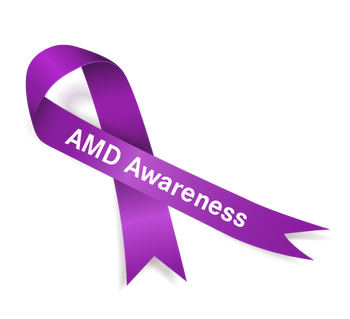
Clinical trial data focusing on treatment for age-related macular degeneration (AMD) have been a highlight at many recent ophthalmology meetings. Here are a few of the latest clinical trials that physicians need to be aware.

Clinical trial data focusing on treatment for age-related macular degeneration (AMD) have been a highlight at many recent ophthalmology meetings. Here are a few of the latest clinical trials that physicians need to be aware.

Although a proven treatment therapy, age-related macular degeneration (AMD) requires frequent, costly anti-vascular endothelial growth factor (anti-VEGF) injections. Some pharmaceutical companies do have patient-assistance programs to help alleviate the financial burden.

A study has revealed that a budgetary saving per treated patient with the fluocinolone acetonide implant (Iluvien) versus ranibizumab (Lucentis) could lead to a significant cost-saving to NHS England.

Twelve-month results of the FILLY trial show that in patients with geographic atrophy, the administration of complement C3 inhibitor APL-2 slowed the growth rate of the disease. It also appeared to increase the risk of new onset AMD, although this did not have an adverse effect on visual outcomes.

Research on treatments and/or causes of age-related macular degeneration (AMD) covers a wide range of approaches and paradigms. The latest research published in the past three months are perfect examples for understanding and treating AMD.

Age-related macular degeneration (AMD) is the leading cause of significant visual acuity loss in people over the age of 50 in developed countries. Almost 80% of the people diagnosed with AMD will have the non-neovascular (dry) or atrophic subtypes. Here is the clinical information patients need to understand this disease.

Two of the top 10 “most-talked-about” articles in JAMA Ophthalmology are about age-related macular degeneration (AMD). One of the current top 5 “most-read” articles in the American Journal of Ophthalmology is also about AMD. Here are a brief synopsis of those three papers.

The American Academy of Ophthalmology’s Preferred Practice Pattern on Age-Related Macular Degeneration “are based on the best available scientific data as interpreted by panels of knowledgeable health professionals.” These patterns offer solid clinical guidelines for treating and counseling AMD patients.

A well-known dilemma surrounding AMD is that there lacks a universally accepted treatment regimen with anti-VEGF injections. The balance between optimal visual outcomes and treatment burden has led some specialists to embrace the treat-and-extend regimen over monthly treatments.

Since February is designated Age-Related Macular Degeneration Awareness month. For healthcare providers, there are numerous resources available to help promote awareness to patients and to encourage patients to continue (or start) annual visual exams.



Brimonidine Drug Delivery System (Brimo DDS) in an intravitreally administered, sustained-release implant (Allergan) shows promise as a treatment for geographic atrophy (GA), secondary to age-related macular degeneration in a phase IIa clinical trial.

Topline results from phase III studies investigating intravitreal brolucizumab (Novartis) for treatment of neovascular age-related macular degeneration (nAMD) support the potential of this novel anti-VEGF antibody to meet the real-world need for an alternative agent with a sustainable therapeutic regimen.

There is no doubt that inflammation is a component of age-related macular degeneration (AMD), and yet the role of corticosteroid treatment in the management of eyes with AMD remains uncertain, said Marc de Smet, MD, PhD.

A new high-density OCT angiography system (AngioVueHD, OptoVue) provides exquisite views of the retinal microvasculature without the need for injection of fluorescein dye.

A recently released ultra-widefield fundus camera takes images in true color and captures high-resolution imagess rom the macula to the far periphery.

The importance of novel therapies for ocular disease is a given. However, as most novel therapies are financed by the private sector, it is fortunate that investors find ophthalmology a worthwhile investment.

After 12 months of treatment with intravitreal aflibercept injections, both treatment-naïve and pre-treated patients demonstrated visual acuity gains. Visual acuity improvement was higher in treatment-naïve patients.

Despite the failure of 2 clinical trials involving a combination therapy of platelet-derived growth factor (PDGF) inhibitor and anti-vascular endothelial growth factor (anti-VEGF) therapy, a third phase III study continues.

After 5 years of follow-up in the Comparison of Age-Related Macular Degeneration Treatments Trials (CATT), the visual acuity gains achieved during the first 2 years of anti-VEGF treatment were not maintained, the choroidal neovascular lesions continued to evolve with evidence of persistent activity in some eyes, and there was increased retinal thinning and geographic atrophy (GA).

A phase III study program investigating abicipar pegol (Allergan) for the treatment of neovascular age-related macular degeneration (nAMD) is underway based on promising efficacy and safety results in phase II studies.

Multimodal imaging, including traditional and newer techniques, is necessary for identifying the spectrum of retinal lesions associated with age-related macular degeneration (AMD), said David Sarraf, MD.

Earlier this month, a jury convicted West Palm Beach retina surgeon Solomon Melgen, MD, on 67 counts of Medicare fraud. This high-profile case hit very close to home, as myself and another retina specialist from my own community were on opposing sides of the case.

Nucleoside-reverse, transcriptase inhibitors (NRTIs) or their derivatives could one day be used to prevent or treat age-related macular degeneration (AMD), according to Jayakrishna Ambati, MD.